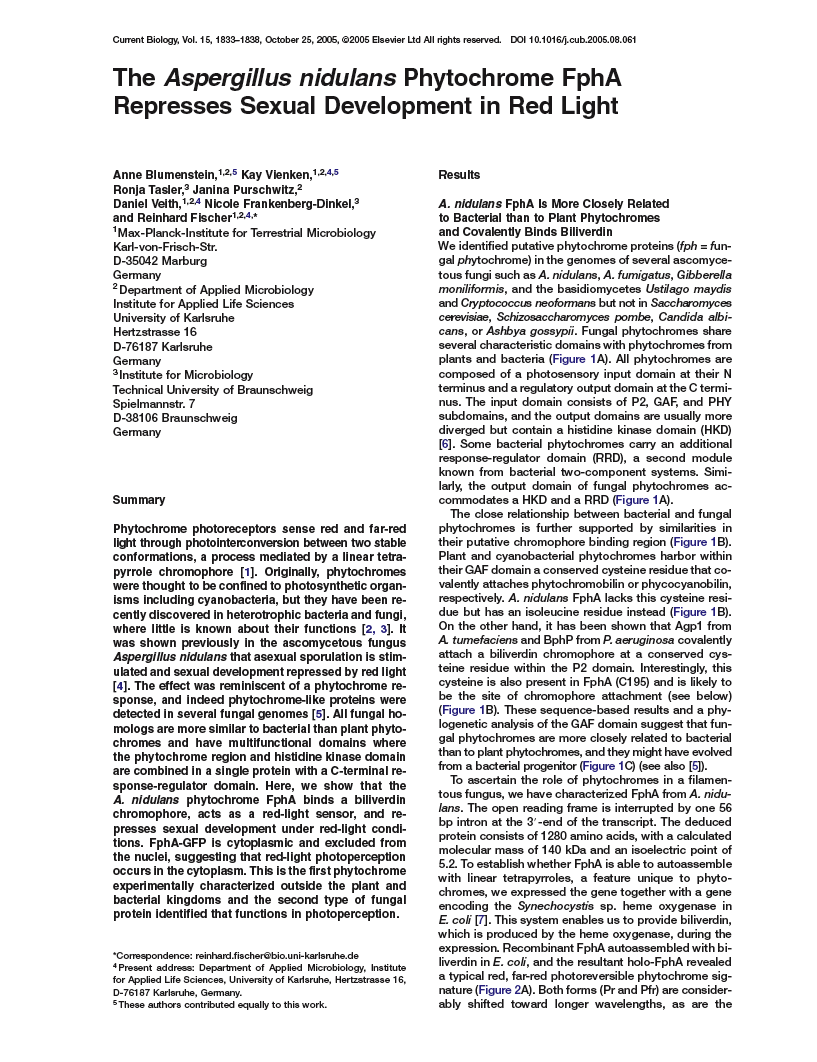Blumenstein et al. 2005
The Aspergillus nidulans phytochrome FphA represses sexual development in red light. Curr. Biol., 15:1833-1838.
Blumenstein, A., Vienken, K., Tasler, R., Purschwitz, J., Veith, D., Frankenberg-Dinkel, N. & Fischer, R.
Abstract
Phytochrome photoreceptors sense red and far-red light through photointerconversion between two stable conformations, a process mediated by a linear tetrapyrrole chromophore. Originally, phytochromes were thought to be confined to photosynthetic organisms including cyanobacteria, but they have been recently discovered in heterotrophic bacteria and fungi, where little is known about their functions. It was shown previously in the ascomycetous fungus Aspergillus nidulans that asexual sporulation is stimulated and sexual development repressed by red light. The effect was reminiscent of a phytochrome response, and indeed phytochrome-like proteins were detected in several fungal genomes. All fungal homologs are more similar to bacterial than plant phytochromes and have multifunctional domains where the phytochrome region and histidine kinase domain are combined in a single protein with a C-terminal response-regulator domain. Here, we show that the A. nidulans phytochrome FphA binds a biliverdin chromophore, acts as a red-light sensor, and represses sexual development under red-light conditions. FphA-GFP is cytoplasmic and excluded from the nuclei, suggesting that red-light photoperception occurs in the cytoplasm. This is the first phytochrome experimentally characterized outside the plant and bacterial kingdoms and the second type of fungal protein identified that functions in photoperception.
comment:
Idnurm, A. & Heitman, J. (2005) Photosensing fungi: Phytochrome in the spotlight. Curr. Biol., 15:R829-R832.

